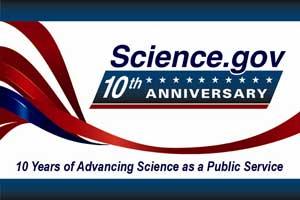
Did you know there is a smart phone application for first responders to use in detecting bomb threats? Or that the first animals to return to the Mount St. Helens area after its 1980 eruption were spiders and beetles? How about the fact that virtual re-creations of cadavers from a death row inmate and a housewife have been used to develop everything from surgical simulators to computerized crash test dummies? These are just three of the fascinating tidbits gleaned from the more than 200 million Web pages accessible via Science.gov—the federal government's "one stop" portal for accessing information from 17 science organizations within 13 government agencies, including the National Institute of Standards and Technology (NIST). This month, Science.gov celebrates its 10th year of service to the American people.
"Over the past 10 years, Science.gov has grown in content, capability, features and functionality," said Tina Gheen of the Library of Congress and chair of the Science.gov Alliance that oversees the portal. "As a result, we have seen significant user growth. We are very proud of this offering of sound science to the public, and we hope to continue providing this free service for years to come."
Science.gov was founded in 2002 to provide a comprehensive gateway to federal science information that would raise scientific and technical literacy, serve as a foundation for future discoveries, and foster greater understanding of the return on investment from the government's science and technology efforts.
"From its inception, Science.gov has been a model of collaboration, transparency and open government," said Alliance co-chair Annie Simpson of the U.S. Geological Survey. "Back in 2002, Science.gov was touted as a wonderful 'potluck picnic' of science agencies pooling their efforts so citizens could find the science information they need. Today, we are still pooling our resources because the sum is more useful to the American public than what any individual agency can do."
Among the recent improvements to Science.gov: Science.gov Mobile, a feature recently named to two "Top Ten" federal government applications lists; Ciencia.science.gov, a Spanish version of the portal; and a search function for federal science videos and still images.
For more information, including a 10th anniversary list of "Cool Things" from the participating agencies, go to www.science.gov.

